
Exploring the Historical Tapestry of Nowa Huta
Discover the unique charm of Nowa Huta in Krakow, a district rich in socialist realism architecture, historical significance, and beautiful green spaces.
Step into Nowa Huta, a unique district in Krakow that offers a fascinating blend of history, architecture, and culture. Originally built as a socialist model city in the late 1940s, Nowa Huta stands as a testament to Poland's post-war era. Its wide streets, grand squares, and monumental buildings are a stark contrast to Krakow's medieval core, providing a unique perspective on the city's past. As you walk through Nowa Huta, you'll notice the distinct socialist realism architecture, with its massive edifices and symmetrical layouts. The district was designed to be self-sufficient, featuring everything from schools and theaters to parks and shops. One of the must-visit sites is the Central Square, where you can see the imposing structures that reflect the socialist vision of a utopian society. Don't miss the chance to visit the Nowa Huta Museum, located in the former administrative building of the steelworks. Here, you can dive deep into the history of the district and learn about the lives of its residents during the communist era. The museum offers a fascinating collection of photographs, artifacts, and interactive exhibits that bring the past to life. For those who enjoy nature, Nowa Huta has plenty of green spaces. Take a leisurely stroll through the picturesque Rose Avenue or relax by the lagoon in Zalew Nowohucki. These tranquil spots provide a perfect escape from the hustle and bustle of the city, allowing you to unwind and take in the serene surroundings.
Local tips in Nowa Huta
- Visit the Nowa Huta Museum for a comprehensive understanding of the area's history.
- Take a guided tour to learn about the architectural significance of the district.
- Spend some time relaxing in the green spaces like Rose Avenue and Zalew Nowohucki.
- Check out the local eateries for a taste of traditional Polish cuisine.
- Wear comfortable shoes as the area is best explored on foot.
Exploring the Historical Tapestry of Nowa Huta
Step into Nowa Huta, a unique district in Krakow that offers a fascinating blend of history, architecture, and culture. Originally built as a socialist model city in the late 1940s, Nowa Huta stands as a testament to Poland's post-war era. Its wide streets, grand squares, and monumental buildings are a stark contrast to Krakow's medieval core, providing a unique perspective on the city's past. As you walk through Nowa Huta, you'll notice the distinct socialist realism architecture, with its massive edifices and symmetrical layouts. The district was designed to be self-sufficient, featuring everything from schools and theaters to parks and shops. One of the must-visit sites is the Central Square, where you can see the imposing structures that reflect the socialist vision of a utopian society. Don't miss the chance to visit the Nowa Huta Museum, located in the former administrative building of the steelworks. Here, you can dive deep into the history of the district and learn about the lives of its residents during the communist era. The museum offers a fascinating collection of photographs, artifacts, and interactive exhibits that bring the past to life. For those who enjoy nature, Nowa Huta has plenty of green spaces. Take a leisurely stroll through the picturesque Rose Avenue or relax by the lagoon in Zalew Nowohucki. These tranquil spots provide a perfect escape from the hustle and bustle of the city, allowing you to unwind and take in the serene surroundings.
Iconic landmarks you can’t miss
Zalew Nowohucki | Park
Experience the lush tranquility of Zalew Nowohucki Park, a serene urban oasis in Kraków perfect for nature lovers and outdoor enthusiasts.
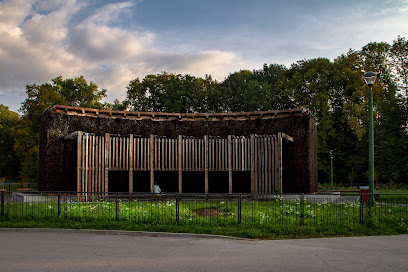
Łąki Nowohuckie w Krakowie
Explore the natural beauty of Łąki Nowohuckie, a serene park in Kraków perfect for hiking, picnics, and enjoying local wildlife.

Muzeum Nowej Huty
Explore Muzeum Nowej Huty, a captivating museum revealing the history and culture of Kraków's unique Nowa Huta district.

Park Ratuszowy w Krakowie
Explore the lush greenery and tranquil ambiance of Park Ratuszowy in Krakow, a perfect escape for nature lovers and city explorers alike.

Aleja Róż
Discover the enchanting Aleja Róż in Kraków, where stunning gardens and rich history create a perfect haven for tourists seeking beauty and tranquility.

Podziemna Nowa Huta
Explore the unique underground museum of Podziemna Nowa Huta and uncover the fascinating history of Kraków's post-war urban development.

Czyżyńskie roundabout
Explore the scenic beauty of Czyżyńskie Roundabout in Nowa Huta, a serene getaway in Kraków filled with art and nature.

Skwer Budowniczych Nowej Huty
Explore the serene beauty of Skwer Budowniczych Nowej Huty, a hidden gem in Kraków offering scenic hikes and rich historical insights.

Najstarszy budynek mieszkalny Nowej Huty
Explore the oldest residential building in Nowa Huta, a remarkable historical landmark that offers a unique glimpse into Kraków's architectural heritage.

Nowa Huta Underground: State Of Emergency
Explore the historical depths of Nowa Huta at the State Of Emergency Museum, a captivating journey through Poland's rich cultural heritage.

Unmissable attractions to see
Lustrzany Labirynt
Experience the thrilling labyrinth of Lustrzany Labirynt in Kraków, where adventure, puzzles, and outdoor fun await every visitor.
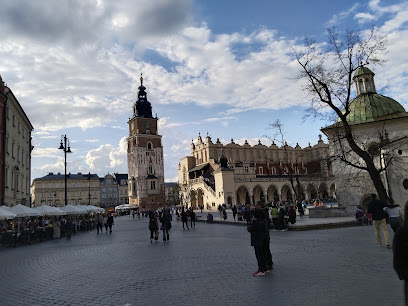
Zalew Nowohucki | Park
Discover the tranquil beauty of Zalew Nowohucki, a prime park destination in Kraków perfect for relaxation and outdoor adventures.

Łąki Nowohuckie w Krakowie
Explore the serene landscapes and diverse wildlife of Łąki Nowohuckie, a natural haven in Kraków perfect for hiking and relaxation.

Fear Factory House of Fear
Discover the thrilling world of Fear Factory House of Fear, Kraków's premier escape room and amusement center, perfect for adrenaline junkies and families.

Muzeum Nowej Huty
Explore the rich history and unique culture of Nowa Huta at Muzeum Nowej Huty, a must-visit museum in Kraków dedicated to social and architectural heritage.

Park. Żeromskiego
Explore the lush landscapes and serene paths of Park Żeromskiego, a tranquil oasis in Kraków's Nowa Huta district, perfect for relaxation and recreation.

Park Ratuszowy w Krakowie
Experience the beauty of nature and tranquility at Park Ratuszowy, a perfect urban escape in Kraków's vibrant Nowa Huta district.

Park Szwedzki w Krakowie
Experience tranquility and nature at Park Szwedzki, a beautiful park in Krakow's Nowa Huta, perfect for leisurely strolls and picnics.

Pływające fontanny
Experience the magical Floating Fountains in Kraków, where water dances in light at Zalew Nowohucki, creating a mesmerizing attraction for all ages.

Aleja Róż
Experience the serene beauty of Aleja Róż, a stunning floral avenue in Kraków, perfect for leisurely strolls and relaxing amidst nature.

Podziemna Nowa Huta
Explore the rich industrial history of Poland at Podziemna Nowa Huta, a captivating underground museum in Kraków.
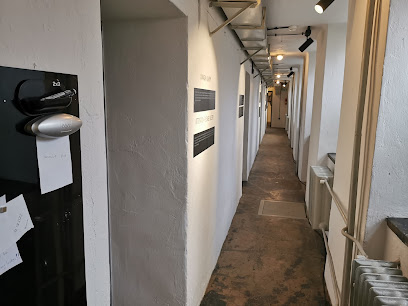
Nowu Hutu - polskie Machu Picchu
Experience the stunning beauty and cultural richness of Nowu Hutu, Poland's enchanting Machu Picchu, nestled in the heart of Kraków.

Muralowa uliczka
Explore Muralowa Uliczka, Kraków's vibrant street adorned with stunning murals that reflect the city's artistic spirit and cultural heritage.

Fontanna
Discover the serene beauty of Fontanna in Nowa Huta, Kraków—a tranquil oasis rich in history and perfect for relaxation.

Essential places to dine
Max Grill
Experience the ultimate barbecue delight at Max Grill in Kraków - where every bite is a celebration of flavor.

Nowa Huta Spaces
Savor authentic Neapolitan cuisine at Nowa Huta Spaces in Kraków—where tradition meets taste.
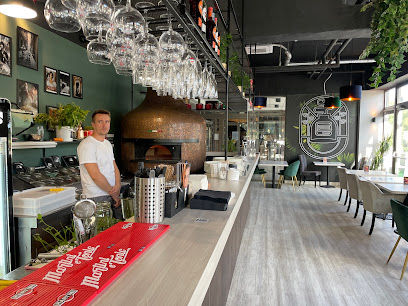
Style restaurant
Discover authentic Polish cuisine in a family-friendly atmosphere at Style Restaurant in Kraków's Nowa Huta district.
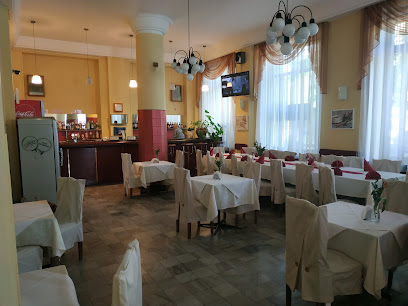
Skarbnica Smaku
Experience authentic Polish cuisine at Skarbnica Smaku in Kraków's Nowa Huta - a culinary journey through traditional flavors.

Trattoria Zielone 13
Experience authentic Italian cuisine at Trattoria Zielone 13 in Kraków's Nowa Huta district – where flavor meets tradition.

Maraska Garden
Experience authentic Polish cuisine amidst tranquil gardens at Maraska Garden in Kraków – a true culinary delight.

Restauracja Zosieńka
Experience authentic Polish cuisine at Restauracja Zosieńka in Nowa Huta, Kraków - where tradition meets taste.
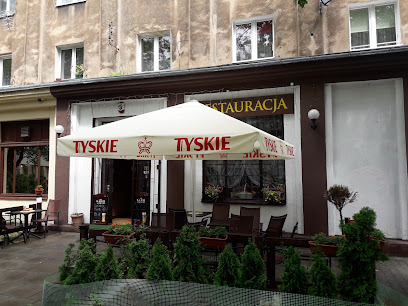
Centralka • Nowohuckie Bistro
Experience authentic Polish cuisine at Centralka • Nowohuckie Bistro in Kraków's vibrant Nowa Huta district.
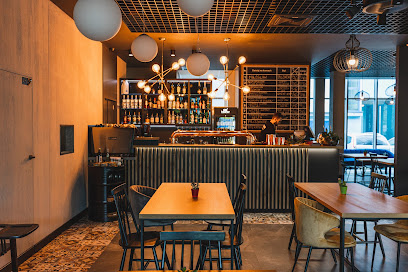
Restauracja Białe Wino
Experience authentic Polish cuisine at Restauracja Białe Wino in Kraków's Nowa Huta district – where tradition meets modern flavors.

Restauracja Bulwarova Food & More | Kraków | Nowa Huta | Przyjęcia Okolicznościowe
Discover the vibrant atmosphere and exquisite flavors at Restauracja Bulwarova - your go-to spot for dining and dancing in Kraków.

Markets, malls and hidden boutiques
Galeria Krakowska
Discover the shopping and dining hub of Kraków at Galeria Krakowska, where modern retail meets exceptional local culture.

Shopping Centre Czyżyny
Experience the vibrant Shopping Centre Czyżyny in Kraków, where diverse shopping and dining options come together in a modern setting.

Małopolska Giełda Narciarska
Explore Małopolska Giełda Narciarska, your ultimate destination for winter sports gear and expert advice in Kraków.

Tania Odzież BIGA Kraków, Plac Centralny
Explore Tania Odzież BIGA in Kraków for unique thrift store finds and stylish clothing at unbeatable prices.

SKLEP PAPIERNICZY NEKO NOWA HUTA
Explore SKLEP PAPIERNICZY NEKO in Kraków for an extensive range of high-quality paper supplies, perfect for students and hobbyists alike.

TO i OWO (Nowa Huta)
Explore TO i OWO in Nowa Huta for exquisite candles and unique specialty items reflecting Kraków's rich culture.

Sklep Biały Latawiec
Explore Sklep Biały Latawiec in Kraków for unique local products and a taste of authentic Polish culture, right in the heart of Nowa Huta.

MODUS STYLE
Explore MODUS STYLE in Kraków: A trendy clothing store offering stylish pieces and a unique shopping experience in Nowa Huta.

Szyk
Explore Szyk in Kraków for authentic Polish crafts, artisanal products, and a memorable shopping experience reflecting local culture.

MT modnie i tanio
Explore trendy fashion at MT Modnie i Tanio, Kraków's go-to clothing store for stylish finds and affordable prices.

Szczęśliwy Rozwój
Explore Szczęśliwy Rozwój in Nowa Huta, Kraków, for unique local crafts and an authentic shopping experience away from the tourist crowds.

Porcelanowy Świat
Discover the literary charm of Porcelanowy Świat in Nowa Huta, Kraków - a must-visit book store for every book lover.

Trini - esoteric shop
Explore the mystical essence of Kraków at Trini, your go-to esoteric shop for crystals, tarot, and spiritual treasures.
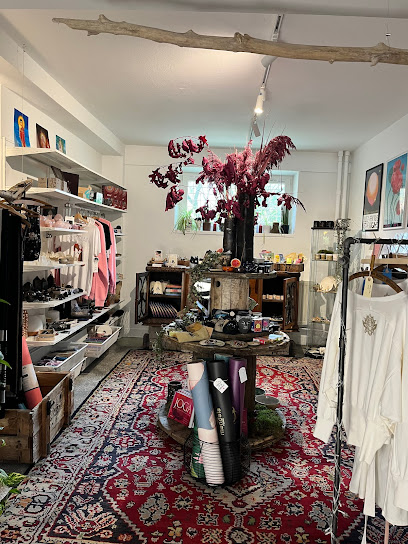
Essential bars & hidden hideouts
Nowa Huta Spaces
Experience authentic Neapolitan cuisine in the heart of Nowa Huta, Kraków, with delicious dishes and a warm, inviting atmosphere.

Central Diner
Experience authentic Polish cuisine at Central Diner in Kraków, a cozy eatery that delights tourists with delicious flavors and affordable prices.

The North Diner
Experience the heart of Polish comfort food at The North Diner in Nowa Huta, Kraków, where deliciousness meets affordability.

Klub Kombinator
Experience the charm of Klub Kombinator, a vibrant bar in Nowa Huta, Kraków with a delightful beer garden and rich local history.

Kamix
Experience the local charm of Kraków at Kamix, a cozy bar in Nowa Huta offering delicious drinks and a warm atmosphere.

Bar Majka
Explore the vibrant atmosphere of Bar Majka, a cozy lounge in Kraków's Nowa Huta, offering delicious drinks and a welcoming ambiance.

Bar mleczny „Szkolny”
Experience the heart of Polish culinary tradition at Bar mleczny „Szkolny”, where authentic dishes meet an inviting atmosphere in Kraków.

Hubertus Pub
Discover the taste of Kraków at Hubertus Pub, where local brews and traditional Polish cuisine unite in a cozy atmosphere.

Klubokawiarnia B7
Experience the warm ambiance of Klubokawiarnia B7, a beloved pub in Kraków's Nowa Huta district, where locals gather to unwind and socialize.

Huta Procentów Beer Bar Kraków
Experience the best of Kraków's nightlife at Huta Procentów Beer Bar, a must-visit destination for craft beer lovers seeking authenticity and warmth.

Local Phrases
-
- HelloCześć
[Chesht] - GoodbyeDo widzenia
[Doh veed-zen-ya] - YesTak
[Tak] - NoNie
[Nye] - Please/You're welcomeProszę
[Proh-sheh] - Thank youDziękuję
[Jenkoo-yoo] - Excuse me/SorryPrzepraszam
[Pzhe-prah-sham] - How are you?Jak się masz?
[Yak shyeh mahsh?] - Fine. And you?Dobrze. A ty?
[Doh-bzheh. Ah tih?] - Do you speak English?Czy mówisz po angielsku?
[Chih moov-eesh poh ahn-ghyehl-skoo?] - I don't understandNie rozumiem
[Nye roh-zoo-myem]
- HelloCześć
-
- I'd like to see the menu, pleaseChciałbym zobaczyć menu, proszę
[H-chyah-wim zoh-bah-chich meh-noo, proh-sheh] - I don't eat meatNie jem mięsa
[Nye yem myen-sah] - Cheers!Na zdrowie!
[Nah zdroh-vee-eh] - I would like to pay, pleaseChciałbym zapłacić, proszę
[H-chyah-wim zah-plah-cheech, proh-sheh]
- I'd like to see the menu, pleaseChciałbym zobaczyć menu, proszę
-
- Help!Pomocy!
[Po-mo-tsi] - Go away!Idź sobie!
[Eedge soh-bee-eh] - Call the Police!Zadzwoń po policję!
[Zahd-voon poh poh-leet-syeh] - Call a doctor!Zadzwoń po lekarza!
[Zahd-voon poh leh-kahr-zah] - I'm lostZgubiłem się
[Zgoo-bee-wem sheh] - I'm illJest mi niedobrze
[Yesht mee nye-doh-bzheh]
- Help!Pomocy!
-
- I'd like to buy...Chciałbym kupić...
[H-chyah-wim koo-peech] - I'm just lookingTylko się rozglądam
[Tih-koh shyeh rohz-gwah-dahm] - How much is it?Ile to kosztuje?
[Ee-leh toh kohs-too-yeh] - That's too expensiveTo jest za drogie
[Toh yest zah droh-gyeh] - Can you lower the price?Czy możesz obniżyć cenę?
[Chih mo-zhesh ohb-nee-zhoo-ch cheh-neh]
- I'd like to buy...Chciałbym kupić...
-
- What time is it?Która jest godzina?
[Ktoo-rah yest goh-dzee-nah] - It's one o'clockJest pierwsza
[Yesht pyeh-veesh-zah] - Half past (10)Pół do (10)
[Poo woh] - MorningRano
[Rah-no] - AfternoonPopołudnie
[Poh-pol-ood-nyeh] - EveningWieczór
[Vee-eh-choor] - YesterdayWczoraj
[V-choh-rye] - TodayDzisiaj
[Jee-sheh] - TomorrowJutro
[Yoo-troh] - 1Jeden
[Yeh-den] - 2Dwa
[Dvah] - 3Trzy
[Tshih] - 4Cztery
[Ch-teh-ree] - 5Pięć
[Pyench] - 6Sześć
[Sheshch] - 7Siedem
[Syeh-dem] - 8Osiem
[Oh-shyem] - 9Dziewięć
[Jee-vyench] - 10Dziesięć
[Jyeh-shench]
- What time is it?Która jest godzina?
-
- Where's a/the...?Gdzie jest...
[G-jeh yest] - What's the address?Jaki jest adres?
[Yah-ki yest ah-drehss] - Can you show me (on the map)?Czy możesz mi pokazać (na mapie)?
[Chih mo-zhesh mee poh-kah-zah-ch (nah mah-pyeh)] - When's the next (bus)?Kiedy będzie następny (autobus)?
[Kye-dy byeh-dzheh nah-stehp-nyy (ow-toh-boos)] - A ticket (to ....)Bilet (do ....)
[Bee-let (doh)]
- Where's a/the...?Gdzie jest...
History of Nowa Huta
-
Nowa Huta was established in the early 1950s as a planned socialist city, intended to serve as a model for the ideal communist society. Designed by the architect Ryszard Stryjecki, its name translates to 'New Steel Mill', reflecting the primary purpose of the district: to support the nearby steelworks, Huta im. Tadeusza Sendzimira, which was one of the largest in Poland. The area was developed rapidly, with a focus on functionality and collective living.
-
Nowa Huta was conceived as a symbol of socialist ideology and progress. Its architecture showcased the principles of socialist realism, featuring wide avenues, spacious public squares, and monumental buildings. The district was meant to represent the triumph of communism over capitalism, in stark contrast to the historical and cultural fabric of nearby Kraków, which was steeped in tradition and history.
-
Throughout the 1960s and 1970s, Nowa Huta became a center for workers' protests and social dissent against the communist regime. The steelworkers' strikes in 1980 were pivotal moments that contributed to the broader Solidarity movement across Poland. This labor movement ultimately played a significant role in the eventual downfall of communism in the region, with Nowa Huta standing as a testament to the struggles and aspirations of its working-class citizens.
-
In addition to its industrial roots, Nowa Huta developed a unique cultural identity. The neighborhood boasts several cultural institutions, including the Nowa Huta Cultural Center, which hosts various artistic and educational events. The community has also embraced its historical significance, with initiatives aimed at preserving the architectural and cultural heritage of the area, including the 1950s-style buildings and public art.
-
After the fall of communism in 1989, Nowa Huta faced economic challenges, similar to many post-industrial regions. However, the area has since undergone significant transformation, with investments in urban development and cultural revival. Today, it attracts visitors interested in its industrial history, architecture, and the vibrant community life that has emerged in the post-communist era, blending the old socialist past with new entrepreneurial spirit.
Nowa Huta Essentials
-
Nowa Huta is located approximately 10 kilometers east of Krakow's city center. You can reach Nowa Huta by taking tram line 4 from the city center, which will take around 30-40 minutes. Alternatively, buses such as lines 131, 143, and 178 also connect the city center to Nowa Huta. For those driving, the area is accessible via the DK94 road.
-
Nowa Huta is well-connected by public transport, including trams and buses. Tram lines 4 and 8 run through the neighborhood, providing easy access to other parts of Krakow. Buses also serve various routes within Nowa Huta. For a more local experience, consider renting a bicycle, as there are dedicated bike lanes and paths in the area.
-
Nowa Huta is generally a safe neighborhood for tourists, but it's advisable to stay vigilant, particularly in less populated areas or at night. As with any urban environment, avoid displaying expensive items and be cautious in crowded places. Areas near the main bus and tram stations can sometimes attract petty crime, so exercise caution there.
-
In case of an emergency, dial 112 for police, fire, or medical assistance. Local hospitals and clinics are available in Nowa Huta. It's advisable to have travel insurance that covers medical emergencies. For minor health issues, pharmacies are conveniently located throughout the neighborhood.
-
Fashion: Do dress comfortably for walking, but avoid overly casual attire when visiting religious sites. Religion: Always respect local customs, especially at churches. Public Transport: Do validate your ticket before boarding. Don't eat or drink on public transport. Greetings: Do greet with a smile and a friendly 'Dzień dobry' (Good day). Eating & Drinking: Do try local dishes in family-run restaurants. Don't refuse food offerings, as it's considered impolite.
-
To experience Nowa Huta like a local, visit the historic central square, Plac Centralny, where you can find local markets and cafes. Engage with locals and try traditional Polish food at eateries like Bar Mleczny (Milk Bar). For a unique experience, explore the area's post-war architecture and take a guided tour to learn about its socialist history. Don't overlook the beautiful parks, such as Park Lotników, for a relaxing afternoon.
Nearby Cities to Nowa Huta
-
Things To Do in Tarnow
-
Things To Do in Bielsko-Biala
-
Things To Do in Zakopane
-
Things To Do in Kielce
-
Things To Do in Gliwice
-
Things To Do in Czestochowa
-
Things To Do in Poprad
-
Things To Do in Ostrava
-
Things To Do in Žilina
-
Things To Do in Martin
-
Things To Do in Rzeszow
-
Things To Do in Prešov
-
Things To Do in Banská Bystrica
-
Things To Do in Opole
-
Things To Do in Radom













